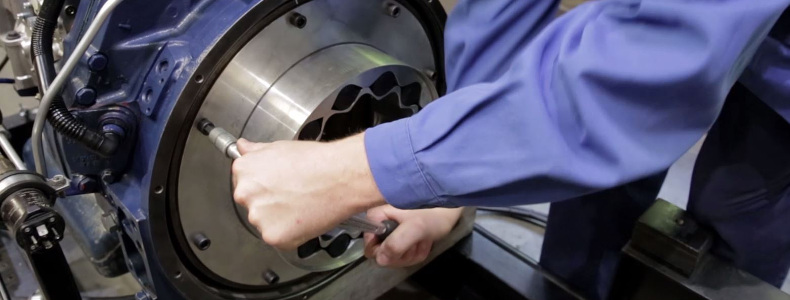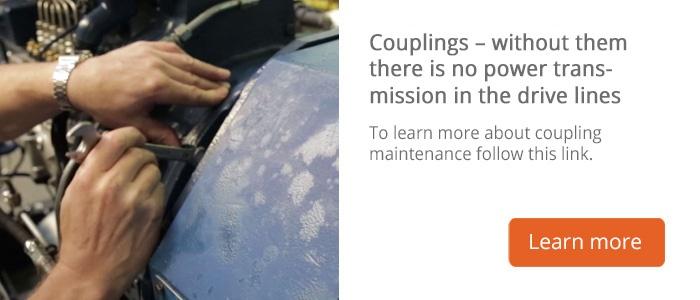Listening, measuring, checking: Maintenance of flexible couplings

Especially in narrow spaces, couplings can only be inspected visually, because the coupling is hardly accessible with conventional measuring devices. Atypical operation noise or vibrations are generally the first signals that there is something wrong with the coupling.
Possible causes are misalignment, wear of elastic elements, loose screwed connections, unbalance or contamination.
Other indicators include the torsional backlash of coupling halves and the change of the ambient temperature of the coupling. If opening the coupling is not possible, not even while the plant is at a standstill, the markings provided on both hubs help assess the torsional backlash as a wear indicator when manually turning the hubs against each other.
Temperature measuring strips on the coupling which can be read through an inspection window and measurements with an infrared thermometer are two options to check the temperature of the coupling. In such a manner, possible disturbances can be recognized and major problems avoided.
If you want to learn more about coupling maintenance, why this is important for the smooth operation of a plant and the pros and cons of different coupling types, check our our whitepaper on maintenance.


Comment